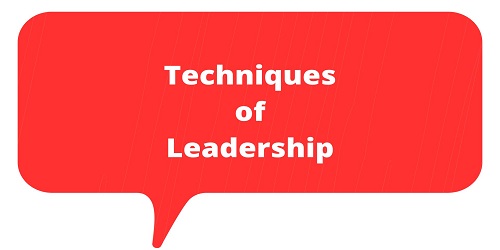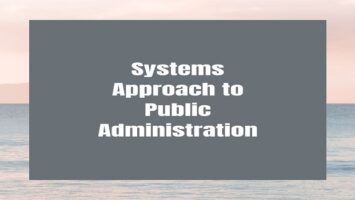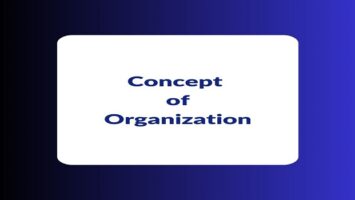Techniques of Leadership:
Like any other art, there are definite techniques of leadership. In fact, it is doubly true of leadership. Proper leadership techniques are a sine qua non of leadership. Even leadership qualities remain unproductive in the absence of a proper technique of action. These bring improvement in general and leadership value in particular. Good leadership implies good manners which are essential in each democratic society. A leader has to avoid giving too many orders at one time. Too many and too frequent orders always create confusion. He has to refrain from getting regarded as a bossy man. A good leader always keeps his order simple, issues these in time, and sequence, and spaces there according to priorities. He should have the technique to handle those who do not do their duties properly. Also, he should not hesitate in showering praise for good work.
A leader should be straightforward in personal dealings. There is a need for a proper balance between formalism, friendliness, cordiality, informality, and familiarity. A good leader has to encourage followers to evolve new ideas.
Thus, there are a number of ways or techniques through which a leader can influence others. Every leader has to use several techniques for keeping his leadership effective and dynamic.
The following techniques can be and are being used by leaders for this purpose.
(1) Suggestion- Suggestion may be either direct or indirect. It is used normally to build up or maintain the prestige of the leader. It is useful in getting support. Thus, a suggestion is an important technique of leadership for exercising influence over others. The leader can get the desired decisions passed and secure their implementation through meaningful and skillful suggestions. To give weightage to suggestions without compromising principles is a basic technique of leadership
(2) Initiation- Initiation is also an important technique of leadership. It is not an active process of leadership.; it is rather a support upon which he can rely. He should have the technique to initiate action, reforms, and changes in the administration.
(3) Persuasiveness- This technique is important and also very essential for influencing individuals for securing a willing agreement on specific issues. It is an art in which the leader has to gather all evidences and opinions and convince the followers to adopt the desired course. A leader has to have the technique of exercising trained influence (control) over the minds and actions of his followers.
(4) Publicity- Publicity is another technique in the hands of a leader by which he can influence others. It is used by him for earning prestige, for conveying facts and conclusions as well as for eliciting the views of all others.
(5) Reliance upon the logic of Events- The leader has to be watchful to sense the trends and tendencies at work and find out the logic of events, prepare a suitable programme of action, and direct the followers accordingly.
(6) A show of Affectionate Devotion- The followers always have or develop a sort of devotion toward their leader. When a leader shows affection towards the devotion of his followers, he may in one way or the other, be in a position to influence the followers. By showing that he cares for the ideas and feelings of his followers, the leader can pursue his goal of influencing their behavior towards desired goals.
The leadership always and continuously depends upon and uses all these techniques for achieving the desired goals through the willing and effective work of the followers.









Comments (No)